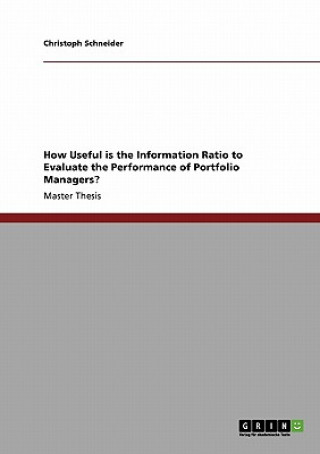
Kód: 05279228
How Useful Is the Information Ratio to Evaluate the Performance of Portfolio Managers?
Autor Christoph Schneider
Master's Thesis from the year 2009 in the subject Business economics - Investment and Finance, grade: A (German Grade: 1,0), European Business School - International University Schloß Reichartshausen Oestrich-Winkel (Union Investm ... celý popis
- Jazyk:
 Angličtina
Angličtina - Vazba: Brožovaná
- Počet stran: 100
Nakladatelství: Grin Verlag, 2009
- Více informací o knize

Mohlo by se vám také líbit
Dárkový poukaz: Radost zaručena
- Darujte poukaz v libovolné hodnotě a my se postaráme o zbytek.
- Poukaz se vztahuje na celou naši nabídku.
- Elektronický poukaz vytisknete z e-mailu a můžete ihned darovat.
- Platnost poukazu je 12 měsíců od data vystavení.
Více informací o knize How Useful Is the Information Ratio to Evaluate the Performance of Portfolio Managers?
Nákupem získáte 175 bodů
 Anotace knihy
Anotace knihy
Master's Thesis from the year 2009 in the subject Business economics - Investment and Finance, grade: A (German Grade: 1,0), European Business School - International University Schloß Reichartshausen Oestrich-Winkel (Union Investment Chair of Asset Management), language: English, abstract: The idea of comparing the performance of different risky investments, for example investment funds, on a quantitative basis dates back to the beginnings of the asset management industry and has been an important field of research in finance since then. Performance measures serve as valuable quantitative evidence for the portfolio manager's performance as well as for the evaluation of investment decisions ex post. Based on the idea of the capital asset pricing model proposed by Treynor (1961), Sharpe (1964), and Lintner (1965), Treynor (1965) developed the first quantitative performance measure intended to rate mutual funds, the Treynor Ratio. Since then, a large number of performance measures with very different characteristics have been developed, for example by Sharpe (1966), Jensen (1968), Treynor & Black (1973), Sortino & Price (1994), and Israelsen (2005). In addition to their power of rating investments ex post, their ability to predict future performance has been thoroughly analyzed by Grinblatt & Titman (1992), Brown & Goetzmann (1995), Carhart (1997), and others. Besides academia, the driving force behind the development of more sophisticated performance measures has always been the investors. This is understandable, as "the truly poor managers are afraid, the unlucky managers will be unjustly condemned, and the new managers have no track record. Only the skilled (or lucky) managers are enthusiastic" (Grinold & Kahn, 2000, p. 478).§By combining and applying the results of previous research to a new sample of nearly 10,000 mutual funds that invest in different countries and asset classes, this thesis clarifies its central research question: Is the Information Ratio a useful and reliable performance measure? In order to answer this central question, it has been split up into the following sub-parts: What are the characteristics of a useful and reliable performance measure? What actually is "good" performance? Is the "good" performance a result of luck or of skilled decisions and does it persist over time? How does the Information Ratio compare to other performance measures, and what are its strengths and weaknesses? This empirical study aims at answering all of these questions and provides a framework for performance evaluation by use of the Information Ratio.
 Parametry knihy
Parametry knihy
Zařazení knihy Knihy v angličtině Economics, finance, business & management Business & management
1749 Kč
- Plný název: How Useful Is the Information Ratio to Evaluate the Performance of Portfolio Managers?
- Autor: Christoph Schneider
- Jazyk:
 Angličtina
Angličtina - Vazba: Brožovaná
- Počet stran: 100
- EAN: 9783640384310
- ISBN: 3640384318
- ID: 05279228
- Nakladatelství: Grin Verlag
- Hmotnost: 141 g
- Rozměry: 210 × 148 × 6 mm
- Datum vydání: 31. July 2009
Oblíbené z jiného soudku
-

Personal MBA
357 Kč -

EMPOWERED - Ordinary People, Extraordinary Products
611 Kč -

Transformed: Moving to the Product Operating Model
629 Kč -

Toyota Way, Second Edition: 14 Management Principles from the World's Greatest Manufacturer
704 Kč -

The Millionaire Real Estate Investor
525 Kč -

The Personal MBA 10th Anniversary Edition
429 Kč -

Playing with FIRE (Financial Independence Retire Early)
384 Kč -

Marketing 5.0 - Technology for Humanity
575 Kč -

Thinking In Bets
421 Kč -

The Power of Full Engagement
347 Kč -

Motive - Why So Many Leaders Abdicate Their Most Important Responsibilities
498 Kč -

4 Stages of Psychological Safety
466 Kč -

Official TOEFL iBT Tests Volume 2, Third Edition
970 Kč -

Data Privacy and GDPR Handbook
1783 Kč -

Official Guide to the TOEFL iBT Test, Sixth Edition
810 Kč -

The Hard Thing about Hard Things
597 Kč -

Karmic Management
364 Kč -

Good To Great
652 Kč -

Slight Edge
422 Kč -

The Advantage
597 Kč -

The Goal
708 Kč -

Business Model Generation - A Handbook for Visionaries Game Changers and Challengers
702 Kč -

Fundamentals of Corporate Finance
1971 Kč -

Crucial Conversations: Tools for Talking When Stakes are High, Third Edition
677 Kč -

Millionaire Real Estate Agent
543 Kč -

Business Adventures
378 Kč -

Onward
369 Kč -

Smart Women Finish Rich
390 Kč -

Thinkertoys
464 Kč -

Ready, Fire, Aim - Zero to GBP100 Million in No Time Flat
812 Kč -

Free to Choose
354 Kč -

Secrets of Power Negotiating - 25th Anniversary Edition
515 Kč -

ISE Fundamentals of Corporate Finance
1914 Kč -

Elite Sales Strategies: A Guide to Being One-Up, C reating Value, and Becoming Truly Consultative
542 Kč -

Corporate Finance
1977 Kč -
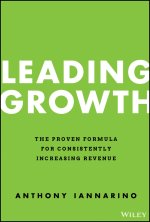
Leading Growth - The Proven Formula for Consistently Increasing Revenue
540 Kč -

Market Leader 3rd Edition Intermediate Coursebook & DVD-Rom Pack
823 Kč -

Coach's Guide to Reflective Inquiry
636 Kč -
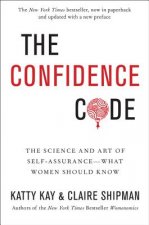
Confidence Code
357 Kč -
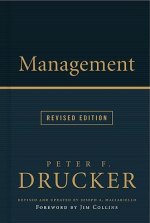
Management
673 Kč -

You Can Negotiate Anything
347 Kč -

Design Thinking Toolbox - A Guide to Mastering the Most Popular and Valuable Innovation Methods
692 Kč -

The Big Book of Dashboards
983 Kč -
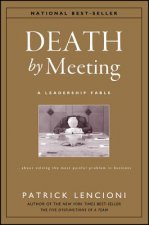
Death by Meeting - A Leadership Fable About Solving the Most Painful Problem in Business
520 Kč -

Business Made Simple
439 Kč -

Ride of a Lifetime
342 Kč -

Testing Business Ideas - A Field Guide for Rapid Experimentation
690 Kč -

In Search Of Excellence
302 Kč -

Outward Mindset
356 Kč
Osobní odběr Praha, Brno a 12903 dalších
Copyright ©2008-24 nejlevnejsi-knihy.cz Všechna práva vyhrazenaSoukromíCookies





 Vrácení do měsíce
Vrácení do měsíce 571 999 099 (8-15.30h)
571 999 099 (8-15.30h)